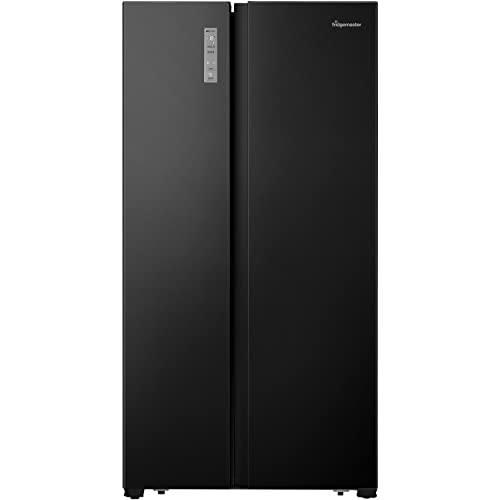20 Things You Should ASK ABOUT Fridge UK Before You Buy Fridge UK
The Comprehensive Guide to Refrigerators in the UK
Refrigerators are a vital home appliance in every family, serving a vital role in food conservation and security. The UK market offers a varied series of fridge types, sizes, functions, and brand names. This post intends to supply an in-depth understanding of fridges available in the UK, including their functions, energy performance, and factors to consider when making a purchase.
Types of Refrigerators Available in the UK
When trying to find a refrigerator, it is very important to comprehend the various types readily available. Each type comes with its own set of functions and functions, dealing with different needs and preferences. The most common types of fridges found in the UK include:
1. Leading Freezer Refrigerators
- Description: The traditional design, including the freezer compartment on top.
- Pros: More cost effective, large, simple access to fresh food.
- Cons: Limited freezer space, the top may be less practical for bulk products.
2. Bottom Freezer Refrigerators
- Description: Freezer is located at the bottom, allowing easier access to fresh food.
- Pros: Greater convenience, much better presence of fresh items.
- Cons: Usually more expensive, some might deal with big frozen items.
3. Side-by-Side Refrigerators
- Description: Features 2 vertical compartments, one for the Buy Fridge Uk and one for the freezer.
- Pros: Ample storage space, simple to gain access to both frozen and fresh foods.
- Cons: Wider footprint, they may not fit in smaller sized kitchens.
4. French Door Refrigerators
- Description: Combines features of bottom freezers and side-by-sides, with two doors for the fridge on top.
- Pros: Stylish style, spacious, and typically includes sophisticated features.
- Cons: Higher cost point, lines up badly with smaller sized kitchen layouts.
5. Compact Refrigerators
- Description: Smaller designs designed for minimal areas.
- Pros: Ideal for studio apartments or offices, energy-efficient.
- Cons: Limited storage capability, might lack features.
6. Integrated Refrigerators
- Description: Designed to mix effortlessly with kitchen cabinetry.
- Pros: Custom fit, visual appeal, increases home value.
- Cons: Higher cost, may use less versatility in placement.
7. Smart Refrigerators
- Description: Equipped with Wi-Fi and smart innovation functions.
- Pros: Advanced includes like touch screens and internal cameras.
- Cons: Expensive, more complicated to repair.
| Refrigerator Type | Accessibility | Typical Price Range | Energy Efficiency |
|---|
| Leading Freezer | Moderate | ₤ 300 - ₤ 600 | Typical |
| Bottom Freezer | High | ₤ 400 - ₤ 800 | Above Average |
| Side-by-Side | Easy | ₤ 800 - ₤ 1500 | Differs |
| French Door | High | ₤ 800 - ₤ 2000 | High |
| Compact | Restricted | ₤ 200 - ₤ 500 | Typical |
| Integrated | Custom-made | ₤ 1000 - ₤ 2500 | High |
| Smart | Variable | ₤ 1200+ | High |
Secret Features to Consider
- Energy Efficiency: Look for models that are energy-efficient. In the UK, home appliances are ranked from A (most efficient) to G (least effective). An A+ score and above can result in significant energy savings.
- Capacity: Choose a fridge with adequate capability for your family. A standard guideline is 100-200 liters per individual.
- Noise Level: Consider designs that run quietly, especially if the kitchen is near living spaces.
- Cooling Technology: Features like frost-free innovation deserve the financial investment, as they lessen maintenance.
- Adjustable Shelves: Having adjustable shelves enhances the versatility to save larger items.
- Temperature Control: Check for easy-to-use temperature controls and zones for various kinds of food.
- Design: Choose the design and color that matches your cooking area visual, whether you prefer a contemporary stainless steel look or a traditional retro surface.
Purchasing Tips
- Identify Your Needs: Consider your cooking practices, family size, and kitchen area area.
- Set a Budget: Refrigerators come in various cost varieties. Establish a budget before you start going shopping.
- Research Study Energy Ratings: Invest in energy-efficient models to conserve on energy bills.
- Read Reviews: User experiences can supply insights into dependability and efficiency.
- Compare Brands: Some brand names are known for their sturdiness while others might offer more ingenious functions.
Often Asked Questions (FAQs)
1. How long do refrigerators generally last?
- Fridges usually last in between 10 to 20 years, depending on the brand name and how well they are preserved.
2. Are there any maintenance pointers for lengthening the life of a refrigerator?
- Regularly clean the coils, examine the door seals, and occasionally thaw if essential to maintain optimal performance.
3. What is the very best size refrigerator for a family of four?
- For a household of 4, a refrigerator with a capability of around 400-600 liters is normally enough.
4. Do I need to stress over energy intake when purchasing a refrigerator?
- Yes, energy intake is essential. Try to find systems with high energy effectiveness ratings to lower regular monthly expenses.
5. Should I select a fridge with a water and ice dispenser?
- This feature can be practical, specifically for households. Nevertheless, it may need more maintenance than basic designs.
Purchasing a refrigerator is a substantial choice for any home in the UK. With various types available, each with its unique functions and advantages, it is essential to examine individual requirements before choosing. By considering elements such as energy performance, capacity, and design aesthetic appeals, consumers can pick a fridge that lines up well with their way of life, eventually enhancing their kitchen experience while safeguarding food quality and freshness.

